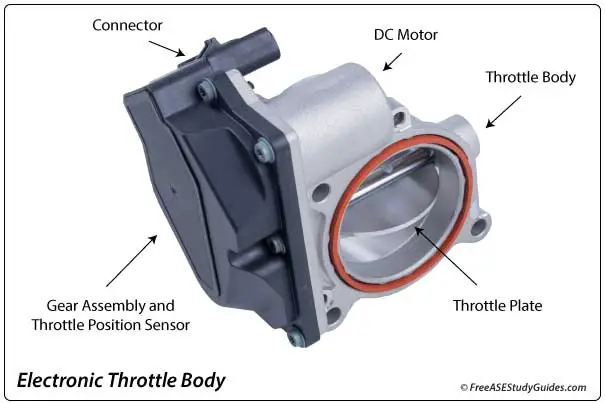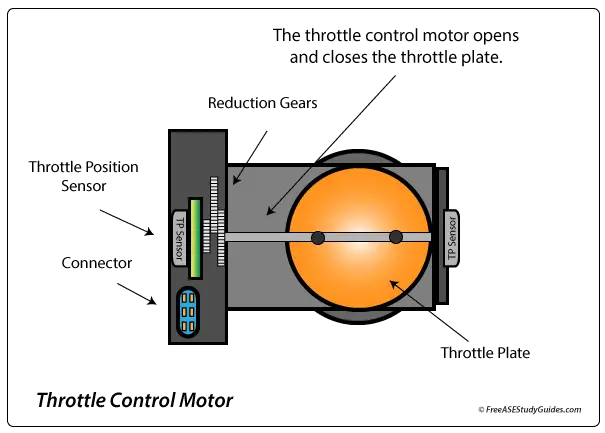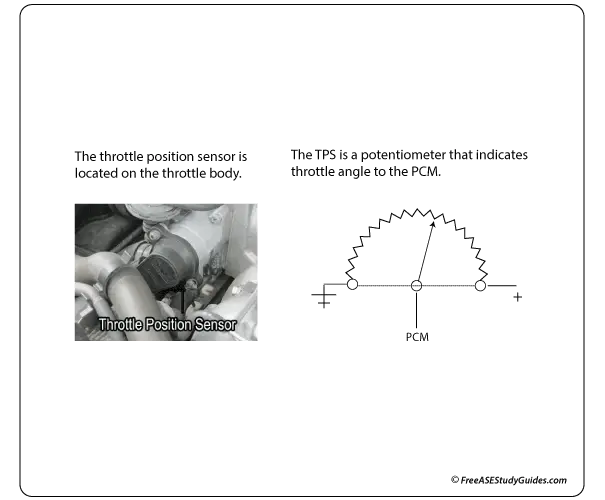Throttle Position Sensor

The (TPS) throttle position sensor indicates the throttle plate angle to the ECM. It contains a potentiometer that changes a 5-volt reference signal sent from the ECM. The ECM uses this, along with other sensor information, to adjust the air-fuel mixture. Some TP sensors are adjusted by loosening two machined screws and rotating the sensor on the throttle body.
Throttle Control Motor

Today's throttle body has a control motor and two throttle position sensors. It is electronically controlled by the ECM, omitting the need for throttle cables used in the past. In addition, these throttle bodies work with other systems like cruise, traction, and stability control.

The ECM and the throttle control motor control the idle on most of these systems, omitting the IAC valve. Both cable-operated and TAC throttle bodies collect carbon around the throttle plate. The ECM compensates as the carbon builds, moving the throttle plates at rest or home position.

Cleaning this carbon and performing a relearn can repair the problem. However, a defective throttle position, throttle control motor, or reduction gear problem typically requires the replacement of the entire unit.
TP Sensor Diagnosis and Repair

The throttle position sensor in the waveform above has a skip that results in hesitation during acceleration. The throttle position sensor is faulty: the ECM will set a fault code and enter limp-home mode.

Understandably, most of these units are sealed and tamper-proof. If something inside is faulty, the TAC is replaced. Diagnose wiring and circuit problems like high resistance, a short, an open, or a damaged or spaded connector visually and with a multimeter.